I was a judge for the New York Times Best Illustrated Children’s Books of 2015. I loved working with Monica Edinger and Frank Viva; we got along well and were respectful of each other’s opinions. They had to deal with me whining a lot about having to eliminate titles which IS PART OF THE GIG I GET IT BUT IT STILL SUCKS. Going from maybe 2000 books to 80 wasn’t actually so terrible; going from 80 to 10 was heartrending. But I’m thrilled with the slate of winners (even if I wish it were 70 books longer) — a hugely diverse variety of artists working in lots of illustrative styles; from different backgrounds, races and ethnicities; from big and tiny publishers. We suspected there would be some anger over the inclusion of A Fine Dessert, and there was. Unfortunately, I figured people would be mad at the judges, but didn’t count on the venom denying the other amazing artists who won the trumpeting and cheering and confetti they richly deserve. So, uh, EVERYBODY GO BUY ALL THESE BOOKS RIGHT NOW.
And just a quick note on the controversy:  I found A Fine Dessert well-researched and thoughtful, and the part of the book that deals with slavery is, to me, a good introduction to the subject for 3- to 5-year-olds. To turn to my own culture, it made me think about Lois Lowry’s Number the Stars, to me the single best introduction to the Holocaust for 7- to 10-year-olds. I grew up in an observant Jewish family, but I still had to learn my own people’s history. My introduction to WWII’s genocide? Those farshtunkiner black-and-white film strips showing piles of corpses being pushed by a bulldozer; the haunting, staring, skeletal bald humans in stripes crammed into bunks; the old men getting beaten up by Nazi goons on the street and having their beards shorn off with pocket knives; the images of crematoria. Today, Holocaust educators say this is shitty pedagogical practice. (I’ve written about quite a lot about what makes good Holocaust kidlit and also about why we need more non-Holocaust lit that explores the vast diversity of Jewish culture, contemporary life and history.) It’s important to ponder developmental appropriateness and trauma, which is why Lowry’s book is a perfect first read. I’ve heard lots of criticism lately of Holocaust books that focus on Righteous Gentiles, but there’s a reason: Kids need to feel that there is some hope, that they themselves can be capable of standing up to injustice. And I worry that today Lowry would be attacked eight ways from Sunday for writing Number the Stars. First and foremost, she’s not Jewish. Her protagonist is one of those righteous gentiles. The story is set in Denmark, the only country that worked very hard to save its Jews and managed to protect an inordinate number. Does this approach soft-pedal the horror of the Holocaust? I’d argue that it’s a way in, urging young readers and learners to go deeper in the future.
Whatever, I’m thinking aloud here, speaking only for myself. The movement to diversify children’s literature is ESSENTIAL, and there will be disagreement and struggle as it happens. We all need to keep talking. (And ooh, hey, today — November 1 — Emily Jenkins, the author of A Fine Dessert, announced that she was sorry she’d been racially insensitive and was donating her advance to We Need Diverse Books.)
In ENTIRELY OTHER news, I got SO INTO writing this profile of badass women Torah scribes. They were funny, spiritual (not in the woo-woo way) and inspiring (not in the vomitous way). This box was in the corner during their conference. Why do I always want to put Barbie’s shoes in my mouth? I need help.
Here is a SorryWatch post (with BREAKING NEWS) about the horrid UConn mac-n-cheese kid. How did the cafeteria manager he pushed (and the chef who tackled the little vuntz) feel about his apology?
Here is a little valentine to Lilith, the old-school “independent, Jewish and frankly feminist” magazine. I distinctly remember this shiver-inducing cover from my childhood:
Powerful, right? The covers have always been an odd mix of boring photography and nifty art.
(We don’t say “retarded” anymore, but the cover image is still great.)
I swooned over a young adult book.
And now I need to help my children construct a) a Nimona costume and b) an Agent Carter costume. Pray for me.
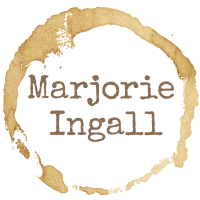
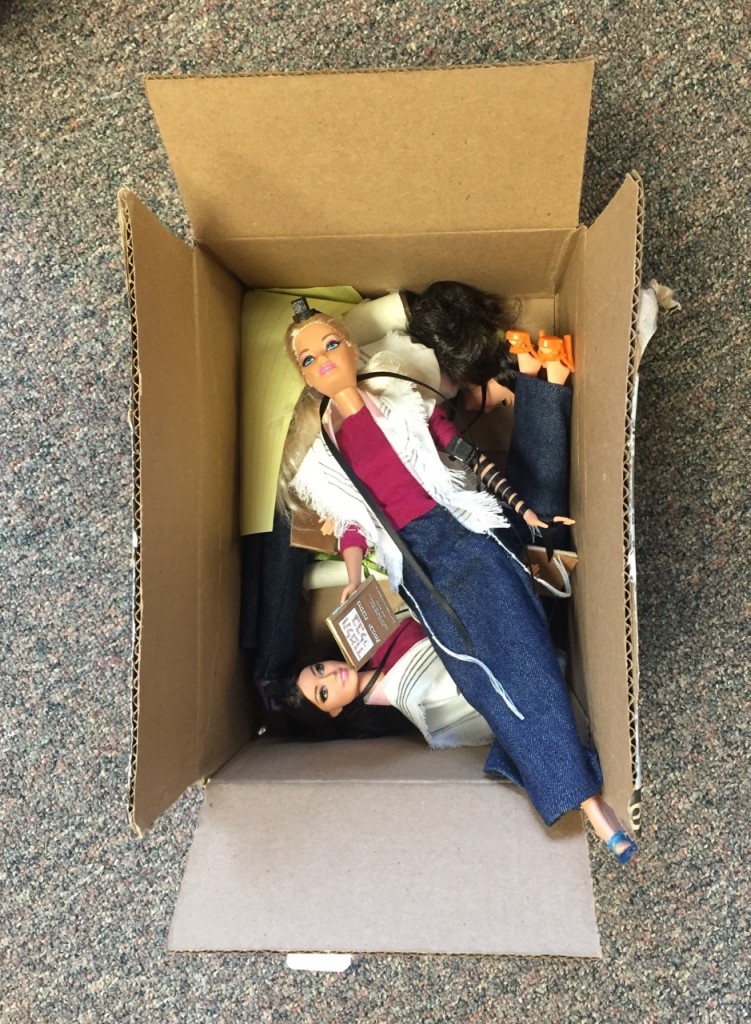
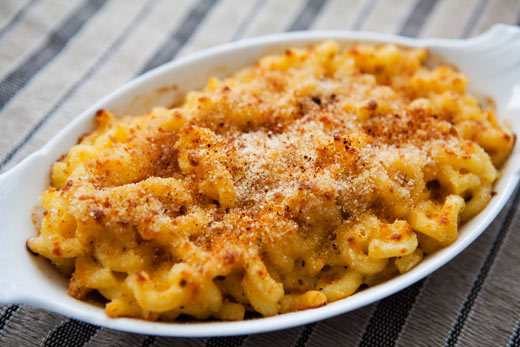
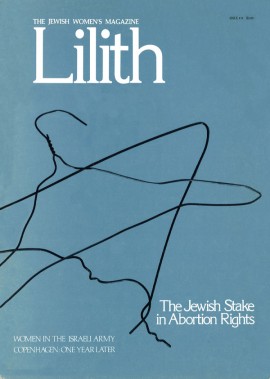
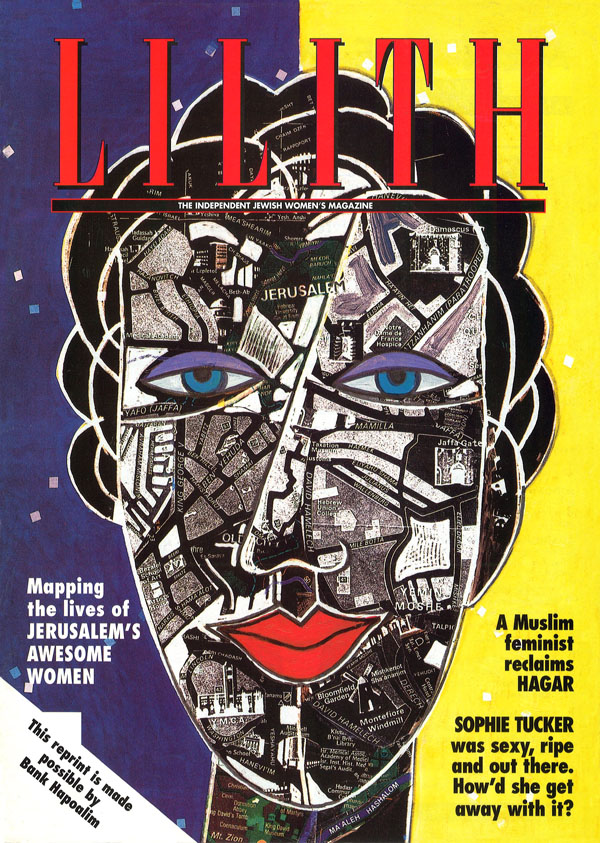
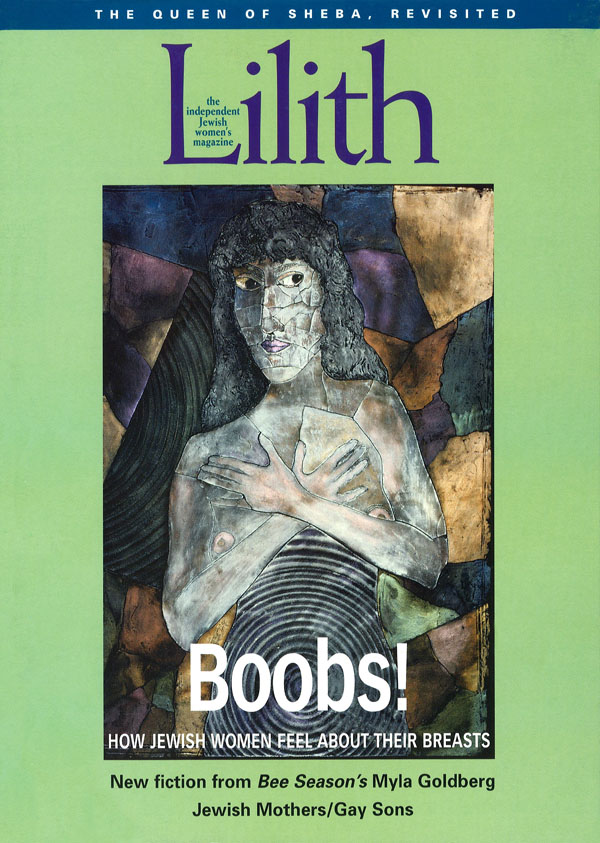 \
\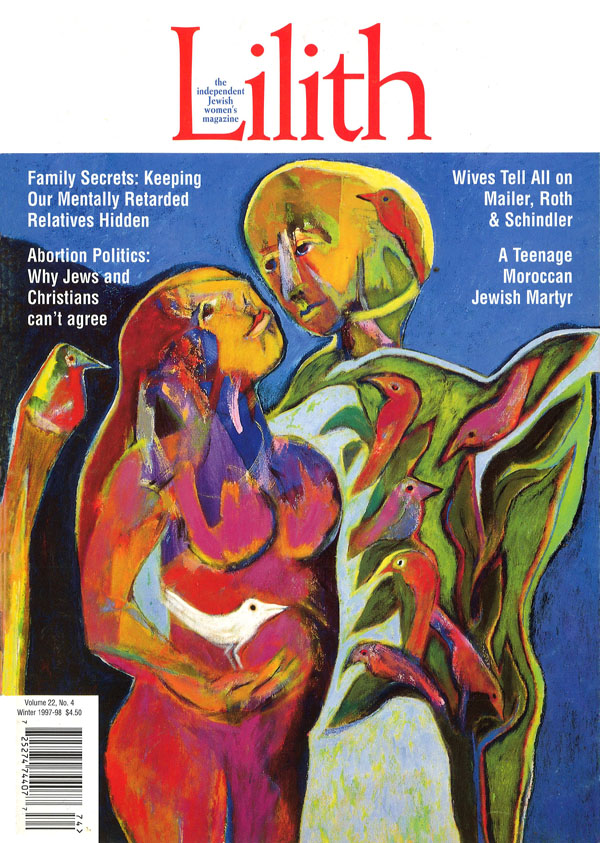

Love, love, love your choices and can’t wait to read Madame Eiffel! I’m incredibly jealous you got to be a judge on this panel. What are some of your runners-up?
I don’t get the controversy over A Fine Dessert. How was she racially insensitive? And I really don’t like hearing she was bullied into declaring herself so.
This reminds me of the recent controversy over the portrayal of Native Americans and Jews in The Hired Girl. I found neither controversial or inherently offensive. After all, there ARE offensive people in the world. Portraying them is not an act of insensitivity; it’s an act of honesty.
Whitewashing history is only going to lead us to repeat it. I feel really strongly about this! And what about colleges telling people not to dress up as things they aren’t? Isn’t that what “dressing up” is about?
Ok, rant over. For now.